Cell Cycle, Mitosis and Meiosis
1/48
There's no tags or description
Looks like no tags are added yet.
Name | Mastery | Learn | Test | Matching | Spaced |
|---|
No study sessions yet.
49 Terms
Cell Cycle
An ordered sequence of events in the life of a cell
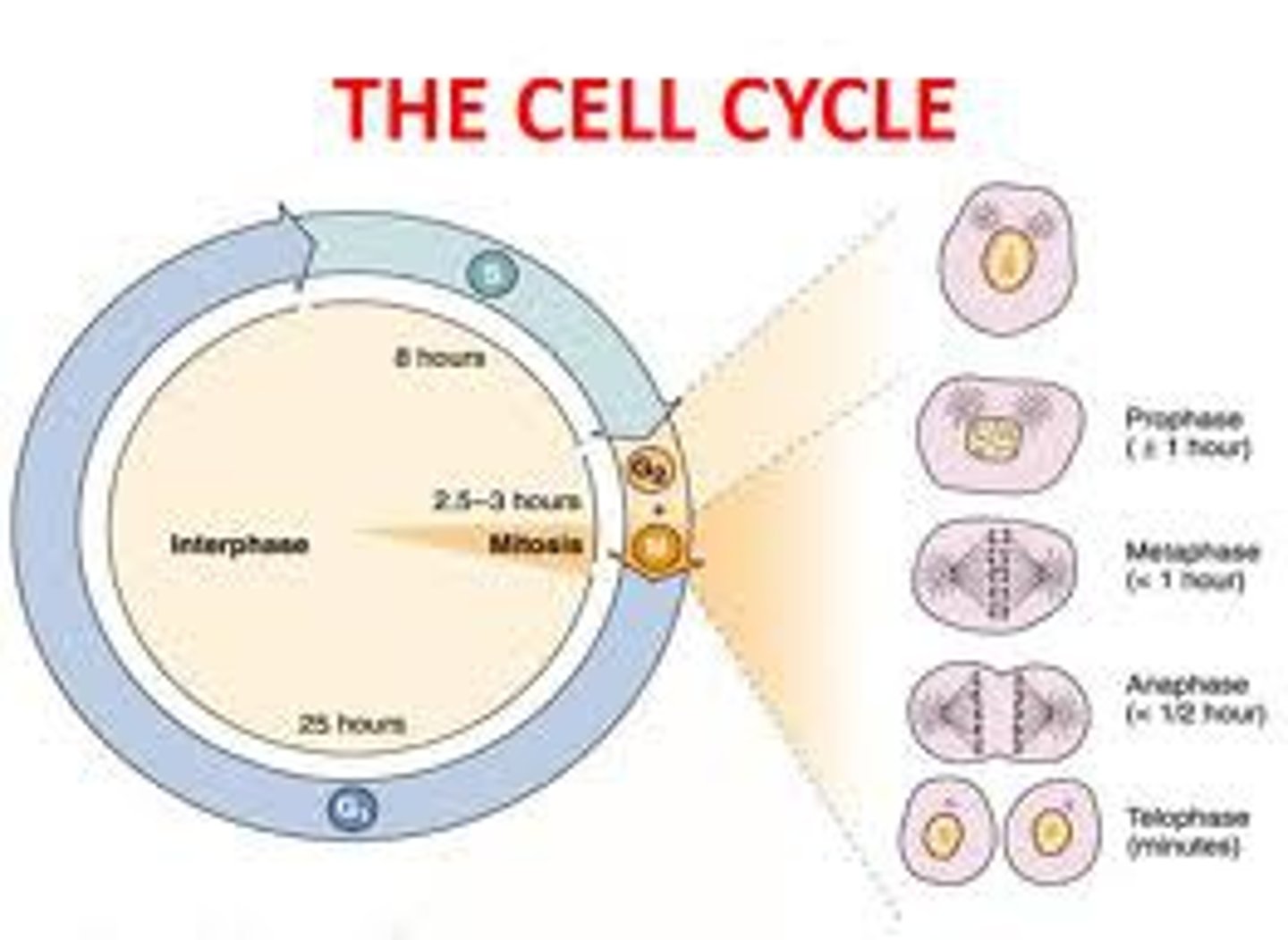
Mitosis
A process of nuclear division in eukaryotic cells conventionally divided into five stages: prophase, prometaphase, metaphase, anaphase, and telophase. Mitosis conserves chromosome number by allocating replicated chromosomes equally to each of the daughter nuclei.
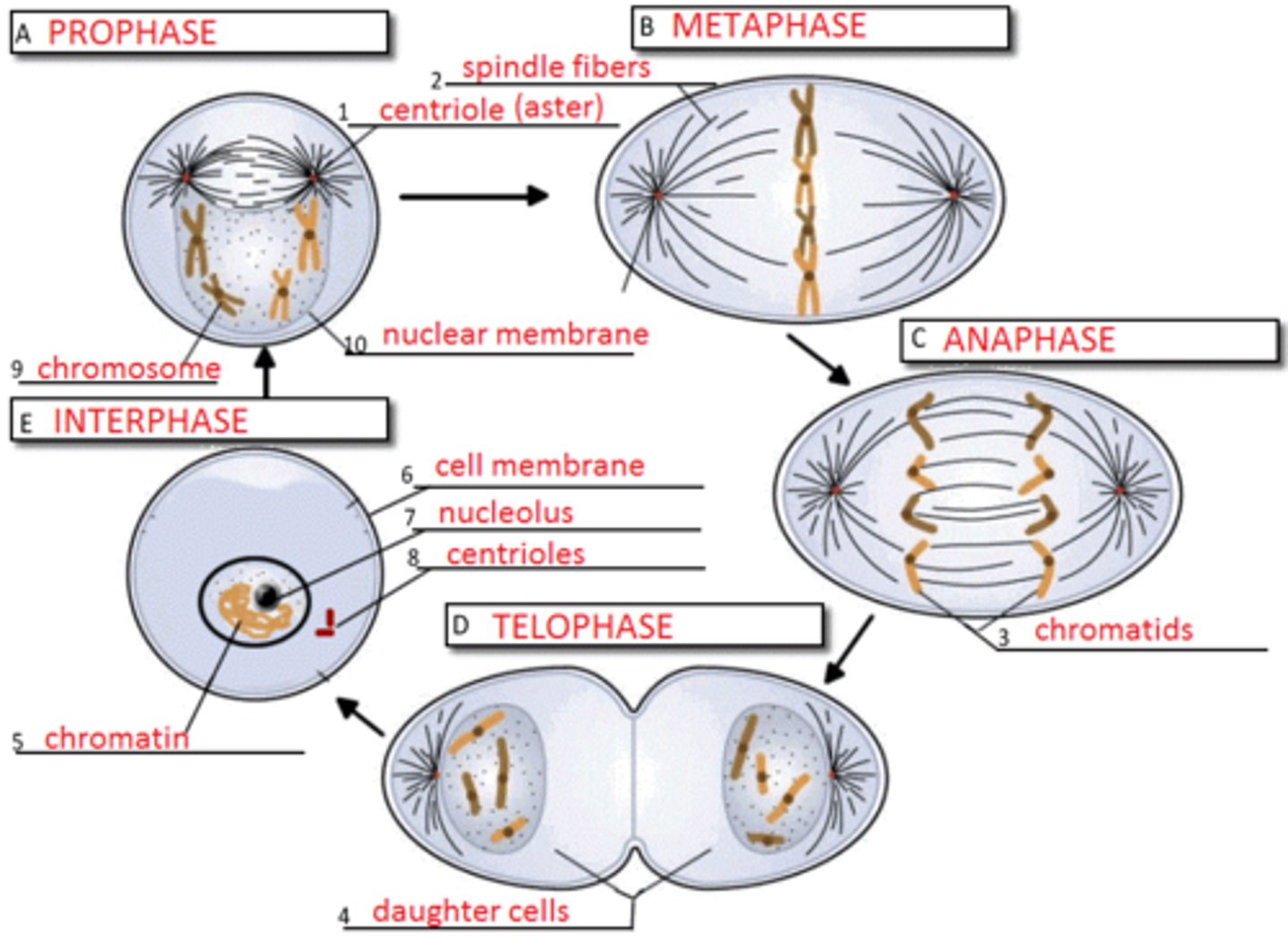
What are the five stages of mitosis?
Prophase
Metaphase
Anaphase
Telophase
Cytokinesis

Prophase
The first stage of mitosis, in which the chromatin condenses into discrete chromosomes visible with a light microscope, the mitotic spindle begins to form, and the nucleolus disappears but the nucleus remains intact.
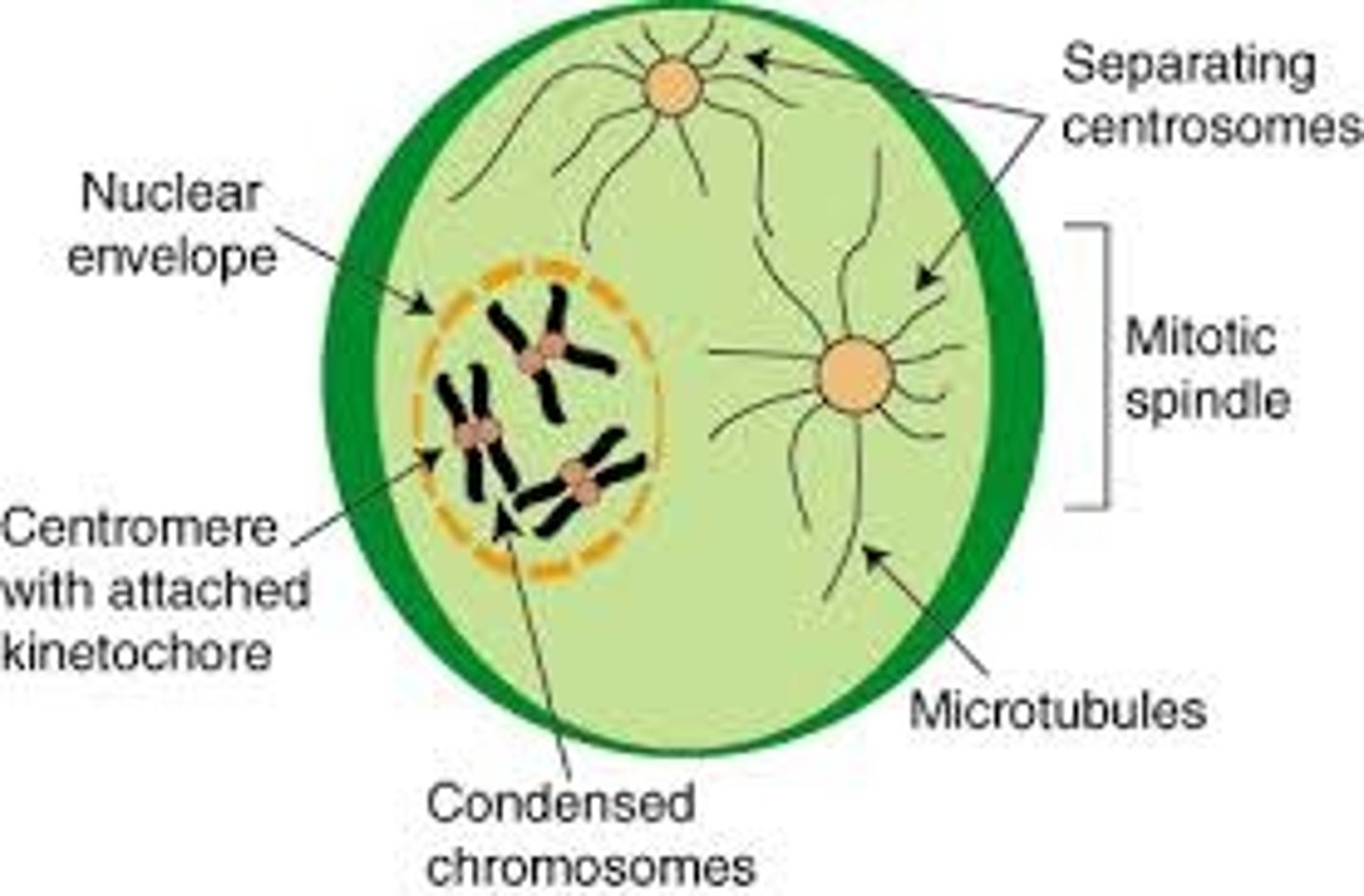
Metaphase
The third stage of mitosis, in which the spindle is complete and the chromosomes, attached to microtubules at their kinetochores, are all aligned at the metaphase plate.
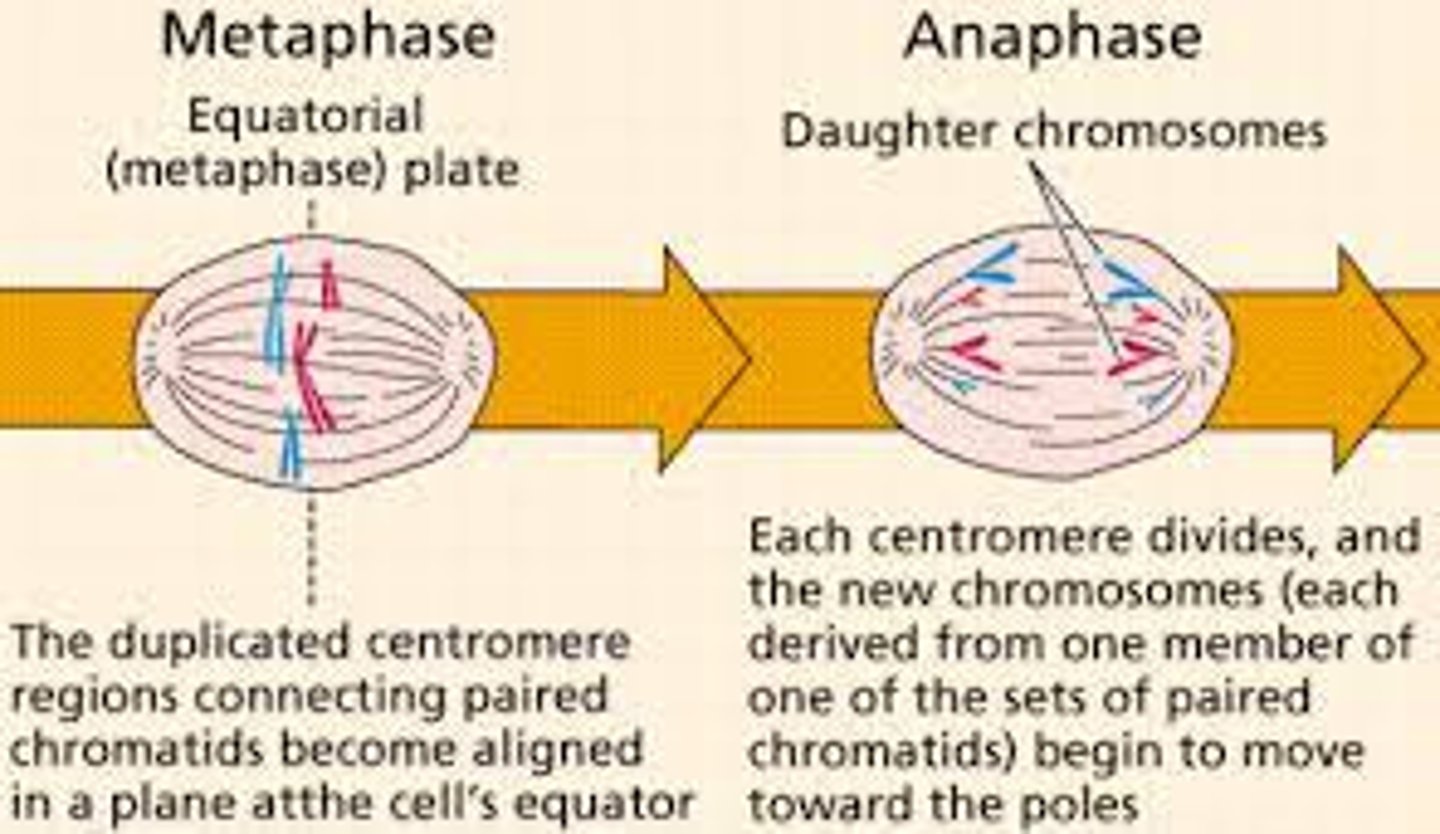
Anaphase
The fourth stage of mitosis, in which the chromatids of each chromosome have separated and the daughter chromosomes are moving to the poles of the cell.
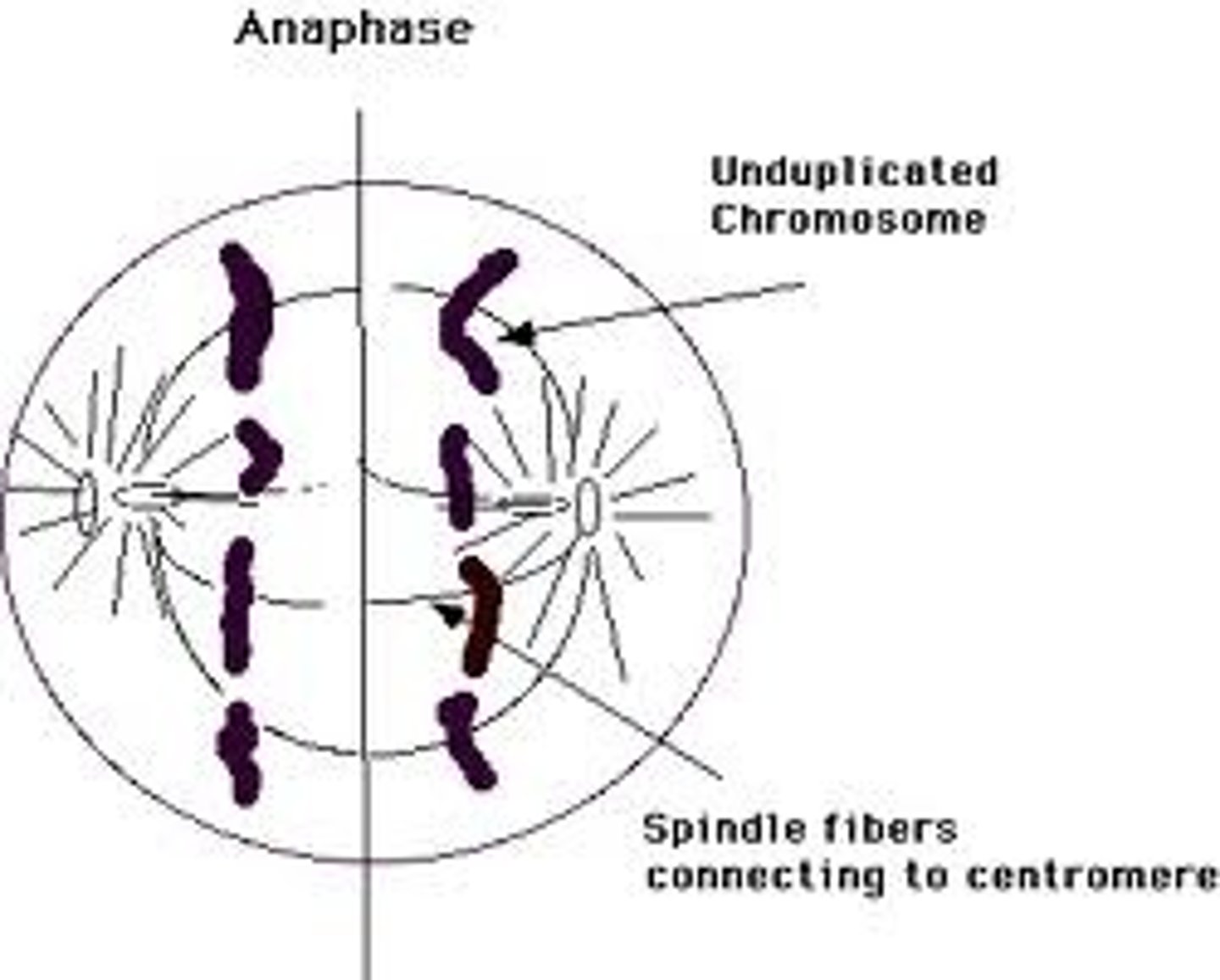
Telophase
The fifth and final stage of mitosis, in which daughter nuclei are forming and cytokinesis has typically begun.
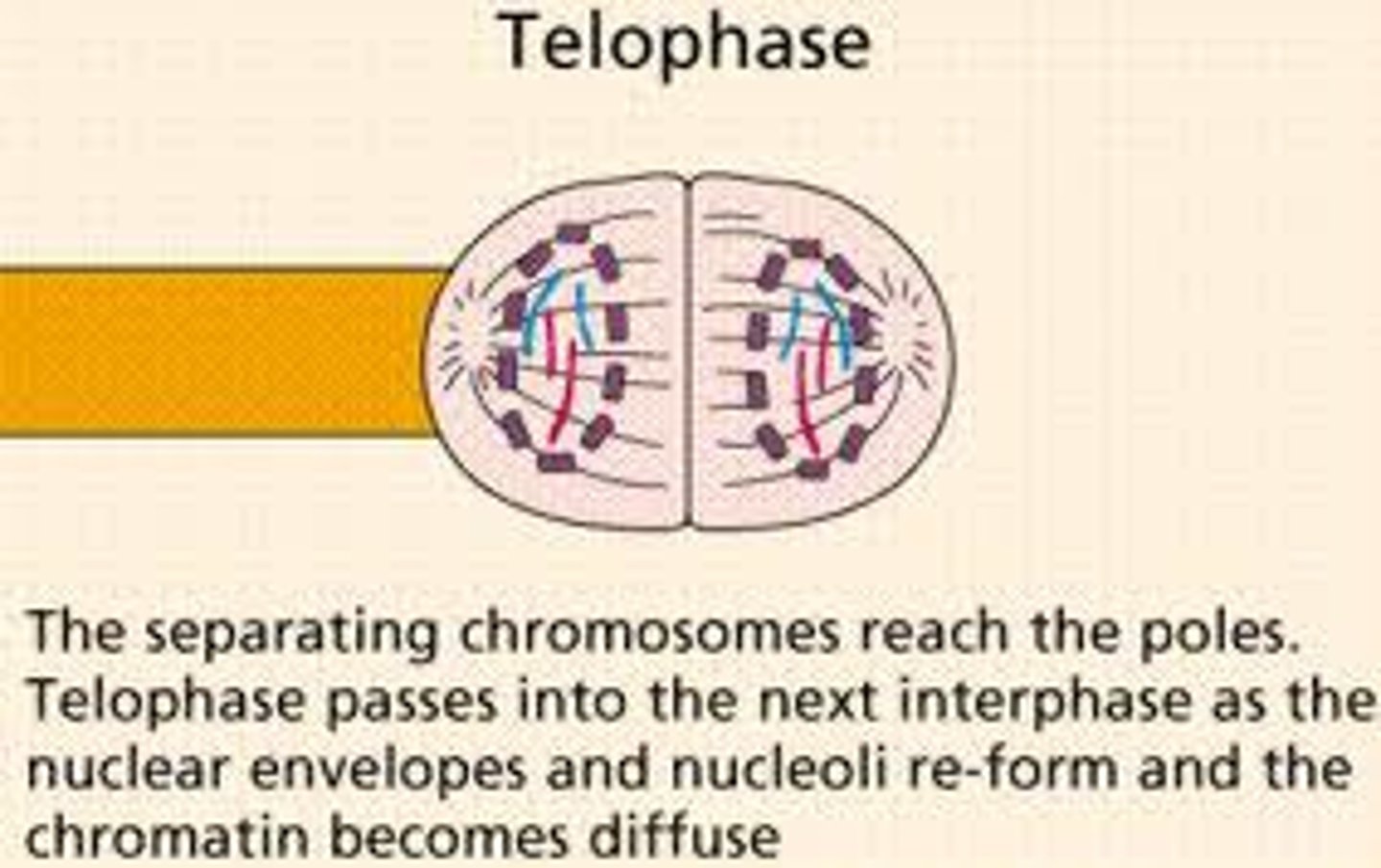
Cytokinesis
The division of the cytoplasm to form two separate daughter cells immediately after mitosis, meiosis I, or meiosis II.
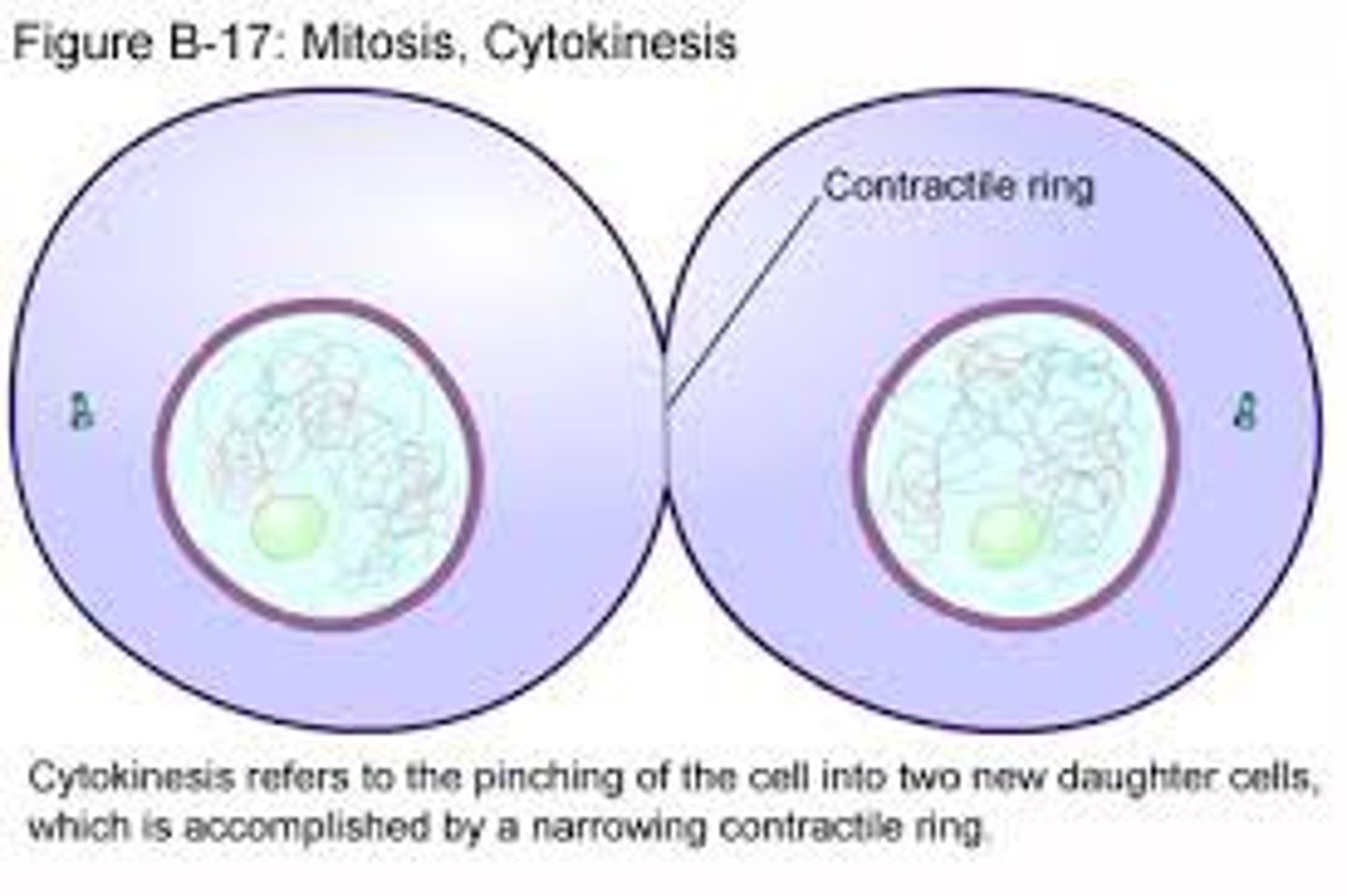
Chromosomes
A cellular structure carrying genetic material, found in the nucleus of eukaryotic cells. Each chromosome consists of one very long DNA molecule and associated proteins
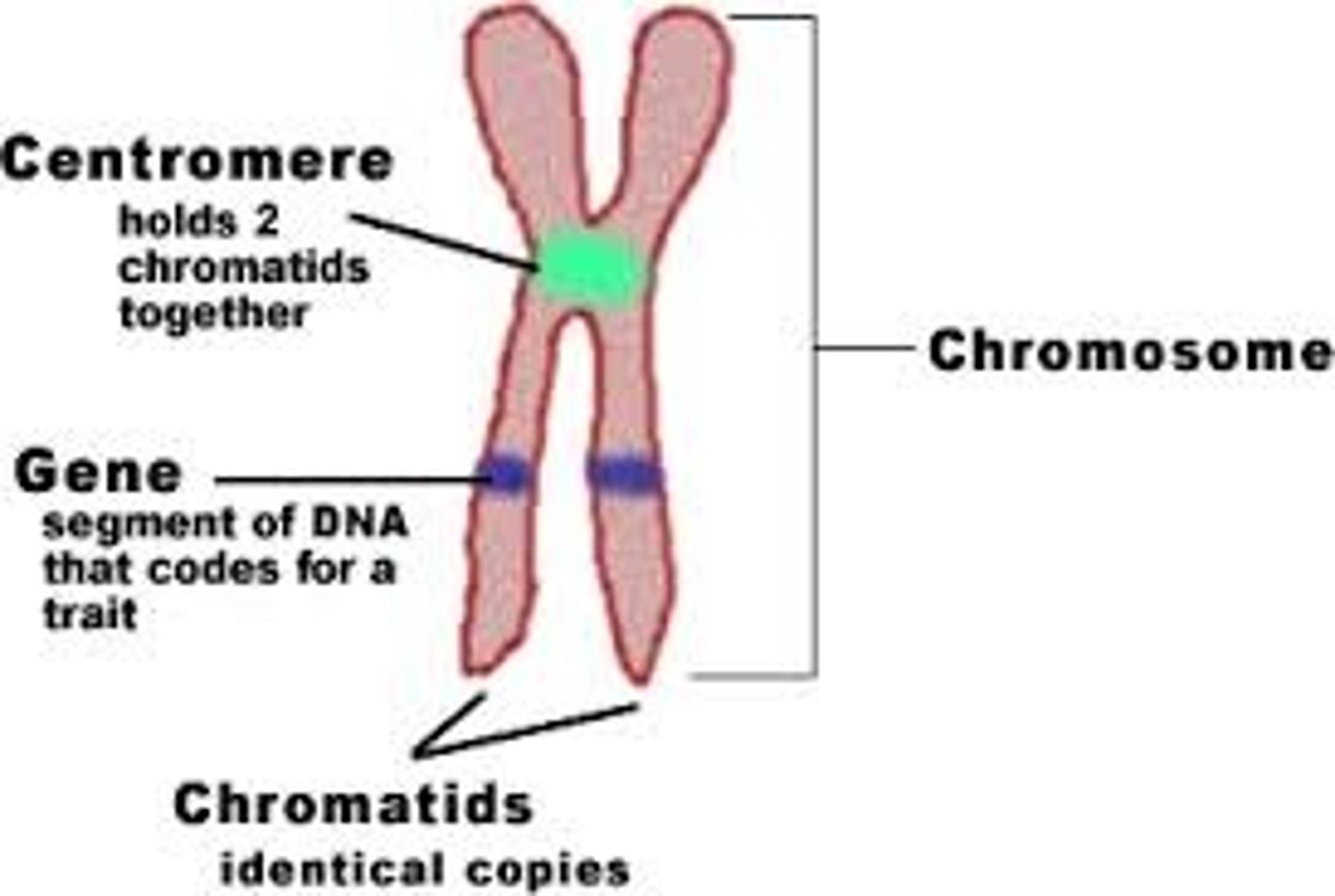
Chromatin
The complex of DNA and proteins that makes up eukaryotic chromosomes. When the cell is not dividing, chromatin exists in its dispersed form, as a mass of very long, thin fibers that are not visible with a light microscope
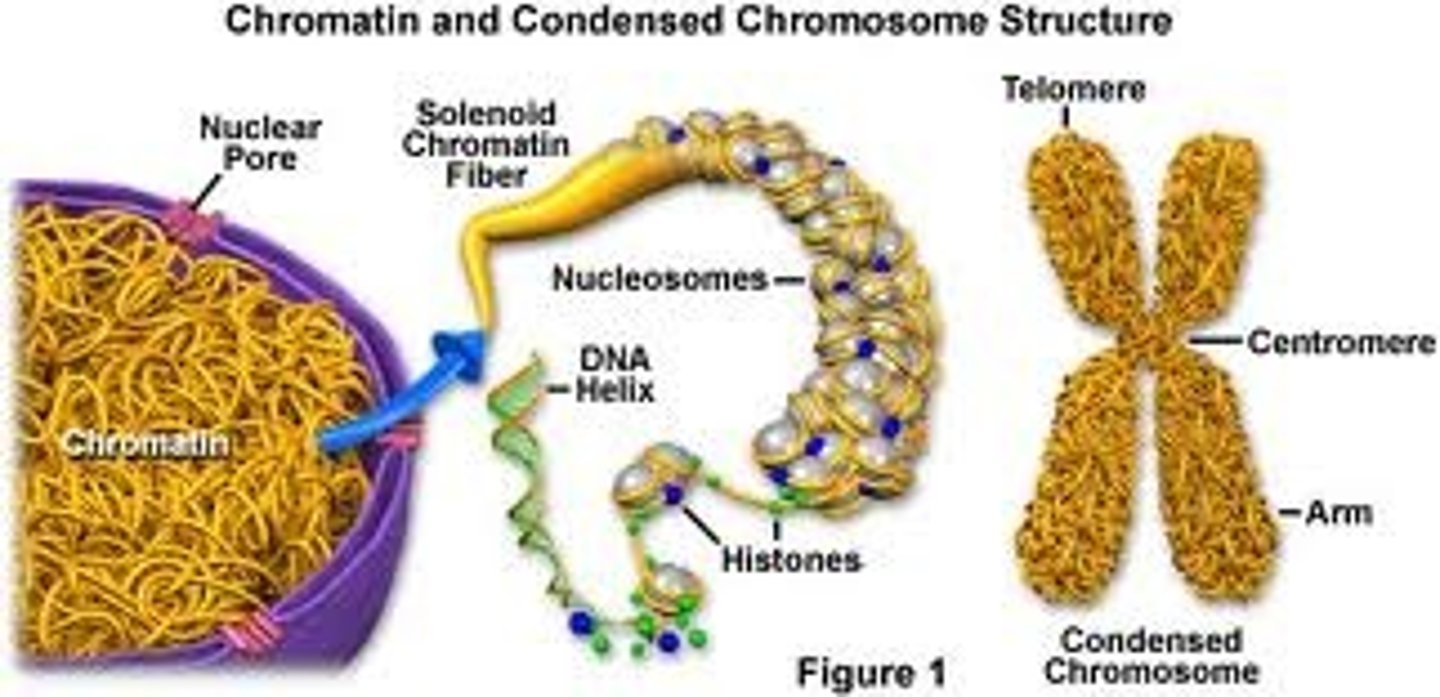
Sister Chromatids
Two copies of a duplicated chromosome attached to each other by proteis at the centromere and sometimes, along the arms. While joined, two sister chromatids make up one chromosome. Chromatids are eventually separated during mitosis or meiosis II
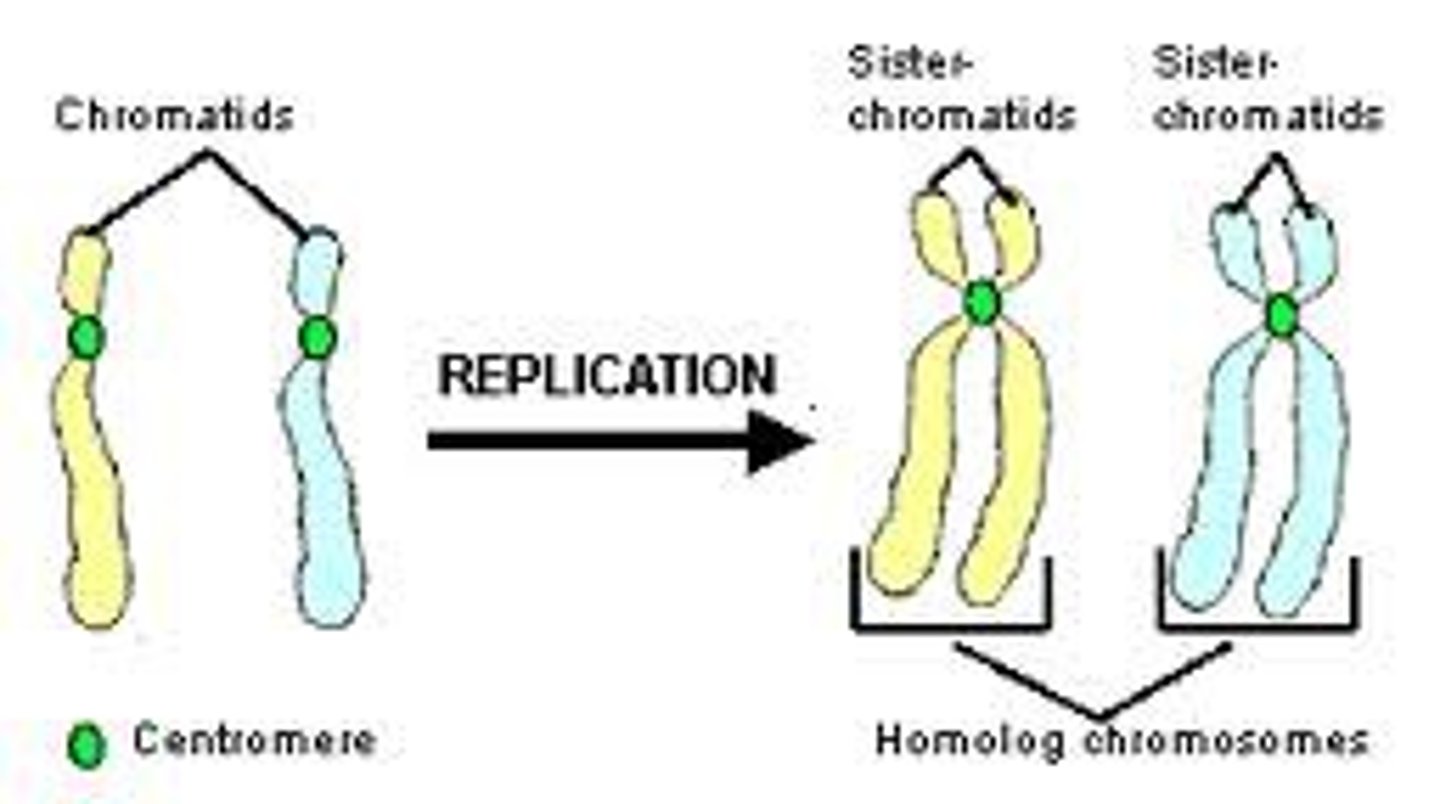
Centromere
In a duplicated chromosome, the region on each sister chromatid where they are most closely attached to each other by proteins that bind to specific DNA sequences; this close attachment causes a constriction in the condensed chromosome. (An uncondensed, unduplicated chromosome has a single centromere, identified by its DNA sequence.)
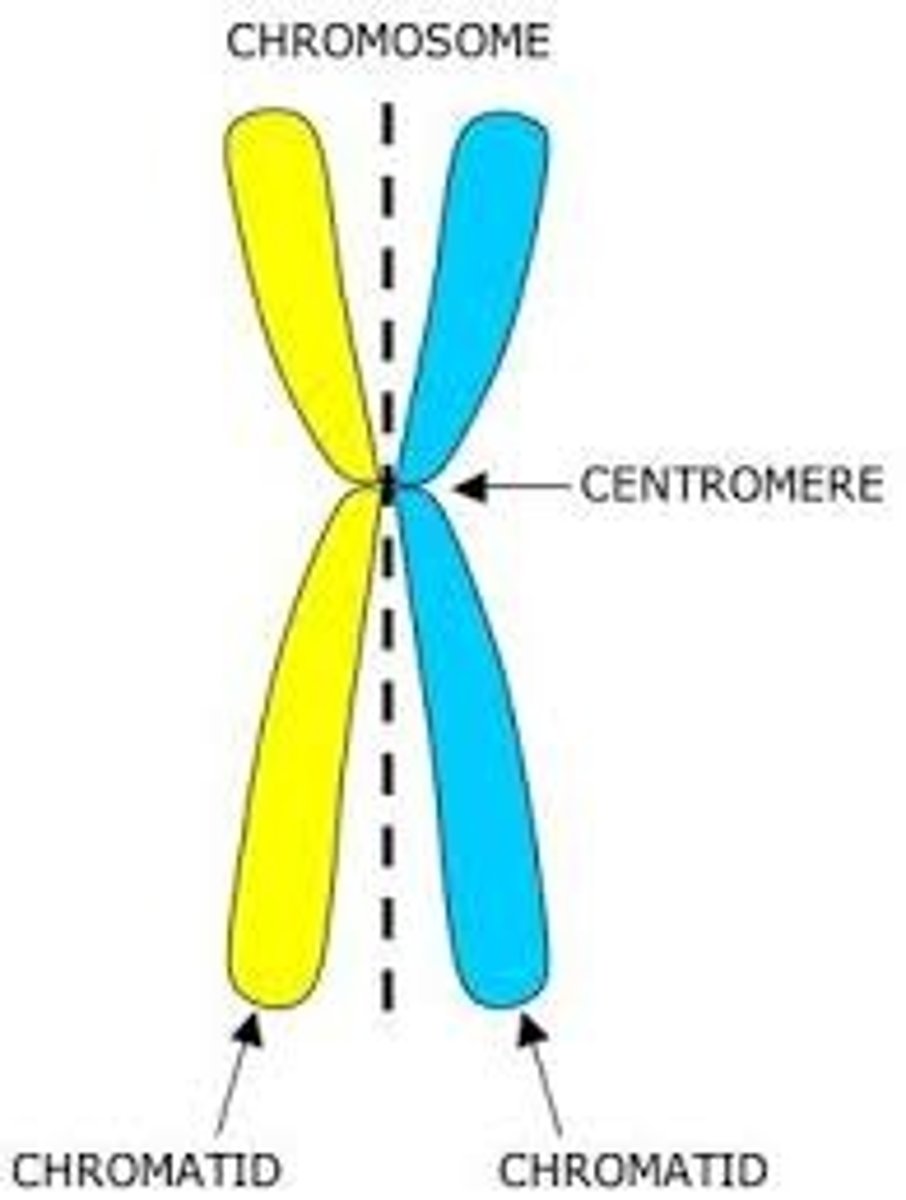
How many chromatids are in a duplicated chromosome?
2
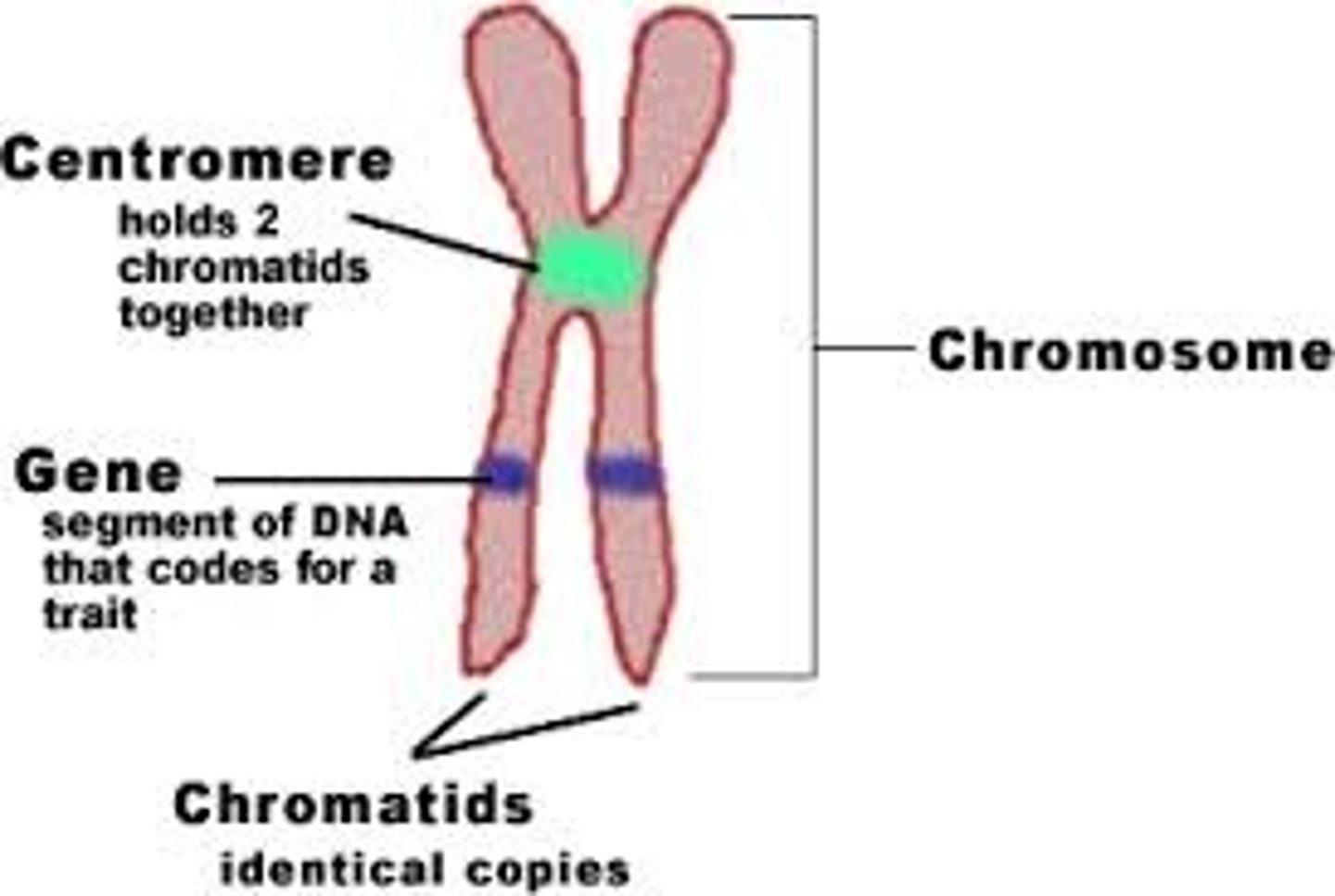
interphase
The period in the cell cycle when the cell is not dividing. During interphase, cellular metabolic activity is high, chromosomes and organelles are duplicated, and cell size may increase. Interphase often accounts for about 90% of the cell cycle.
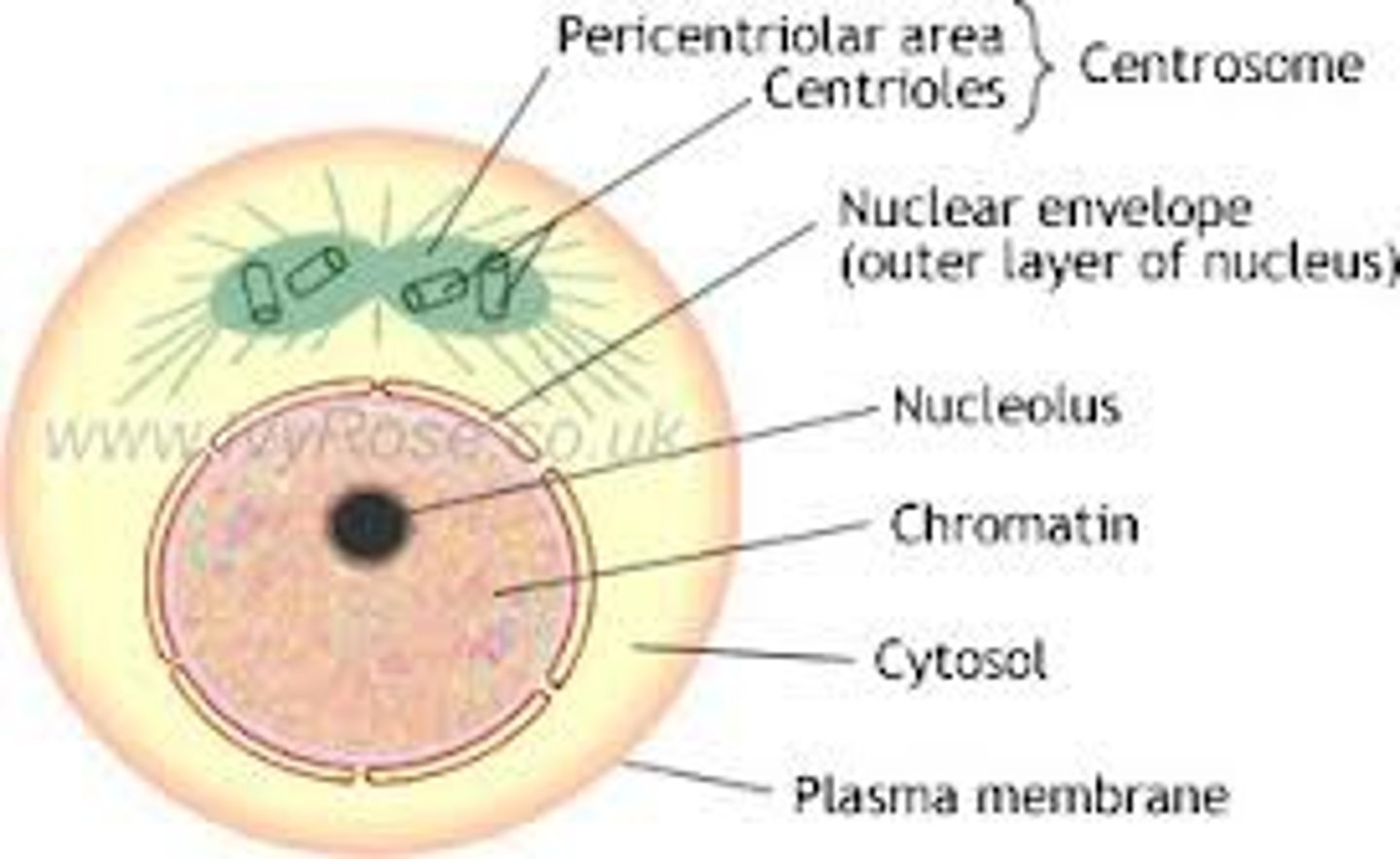
mitotic spindle
An assemblage of microtubules and associated proteins that is involved in the movement of chromosomes during mitosis.
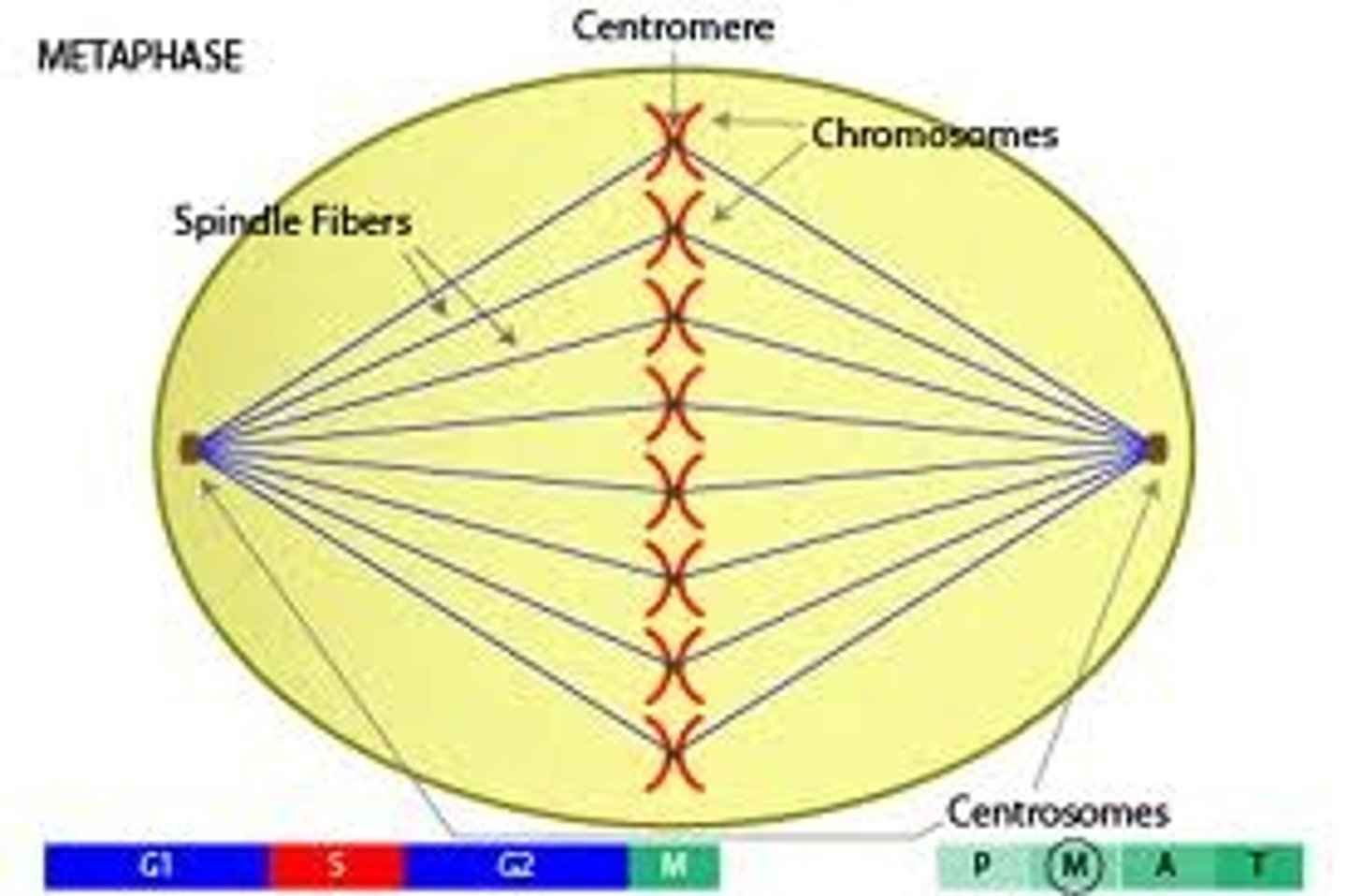
sexual reproduction
A type of reproduction in which two parents give rise to offspring that have unique combinations of genes inherited from the gametes of the two parents.
diploid cell
A cell containing two sets of chromosomes (2n), one set inherited from each parent.
haploid cell
A cell containing only one set of chromosomes (n).
What happens in Interphase?
During the interphase prior to meiosis, chromosomes replicate.
What is Mitosis?
Cell division that generates new cells for growth and repair. The division of one cell into two genetically identical daughter cells
What are the three roles of Mitosis?
Growth
Asexual Reproduction
Repair
What are the 7 Phases of the Cell Cycle?
Interphase
-S- Phase
-G2 Phase
Mitotic Phase
-Mitosis
-Cytokinesis
G1
What happens in the S Phase?
DNA synthesis (or replication) occurs during this phase. At the beginning of the phase, each chromosome is single. At the end, after DNA replication, each chromosome consists of two sister chromatids.
What happens during Interphase?
Typically, this phase accounts for 90% of the cell cycle. It is a time of high metabolic activity. The cell grows by producing proteins and organelles, and chromosomes are replicated.
What happens during mitosis?
This is when division of the nucleus occurs. The chromosomes that have been replicated are distributed to two daughter nuclei.
What happens during G2?
This third subphase of interphase is a period of metabolic activity and growth. During this phase the cell makes final preparations for division.
What happens during G1?
This is the portion of the cell cycle just after division, but before DNA synthesis. During this time the cell grows by producing proteins and organelles.
What happens during cytokinesis?
This is the step in the cell cycle when the cytoplasm divides in two.
Of what two processes does cell division consist of?
Mitosis and Cytokinesis
Cell division consists of two processes: mitosis and cytokinesis. Mitosis— division of the nucleus and its chromosomes— is divided into five phases: prophase, prometaphase, metaphase, anaphase, and telophase. Mitosis is followed by cytokinesis, when the cytoplasm splits to form two separate daughter cells.
What happens during prophase?
1. The nucleoli disappear
2. Chromatin fibers coil up to become discrete chromosomes.
3. Each chromosome consists of two identical sister chromatids, joined at the centromere.
4. Microtubules grow out from the centrosomes, initiating formation of the mitotic spindle.
What happens during metaphase?
1. The mitotic spindle is fully formed
2. The microtubules attached to kinetochores move the chromosomes to the metaphase plate, an imaginary plane equidistant from the poles.
What happens during anaphase?
1. The two centromeres of each chromosome come apart, separating the sister chromatids.
2. Once separate, each sister chromatid is considered a full-fledged daughter chromosome.
3. Motor proteins of the kinetochores "walk" the daughter chromosomes along the spindle microtubules toward opposite poles
4. Microtubules shorten.
5. At the same time, the spindle microtubules not attached to chromosomes lengthen, pushing the two poles farther apart and elongating the cell.
What happens during Telophase?
1. nuclear envelopes form around the identical sets of chromosomes at the two poles of the cell.
2. The chromosomes uncoil
3. Nucleoli appear in the two new nuclei.
4. Meanwhile, cytokinesis begins, splitting the cytoplasm and separating the two daughter cells.
How is Cytokinesis different in Animal Cells?
In animal cells, cytokinesis begins with the formation of a cleavage furrow. At the site of the furrow, a ring of microfilaments contracts, much like the pulling of drawstrings. The cell is pinched in two, creating two identical daughter cells.
How is cytokinesis different in plant cells?
In plant cells, cytokinesis begins when vesicles containing cell-wall material collect in the middle of the cell. The vesicles fuse, forming a large sac called the cell plate. The cell plate grows outward until its membrane fuses with the plasma membrane, separating the two daughter cells. The cell plate's contents join the parental cell wall. The result is two daughter cells, each bounded by its own continuous plasma membrane and cell wall.
G1 Phase
The first gap, or growth phase, of the cell cycle, consisting of the portion of interphase before DNA synthesis begins.
S Phase
The synthesis phase of the cell cycle; the portion of interphase during which DNA is replicated.
G2 Phase
The second gap, or growth phase, of the cell cycle, consisting of the portion of interphase after DNA synthesis occurs.
Centrosome
A structure present in the cytoplasm of animal cells that functions as a microtubule-organizing center and is important during cell division. A centrosome has two centrioles.
Cleavage Furrow
The first sign of cleavage in an animal cell; a shallow groove around the cell in the cell surface near the old metaphase plate.
The region of a chromosome holding the two double strands of replicated DNA together is called _____.
a centromere
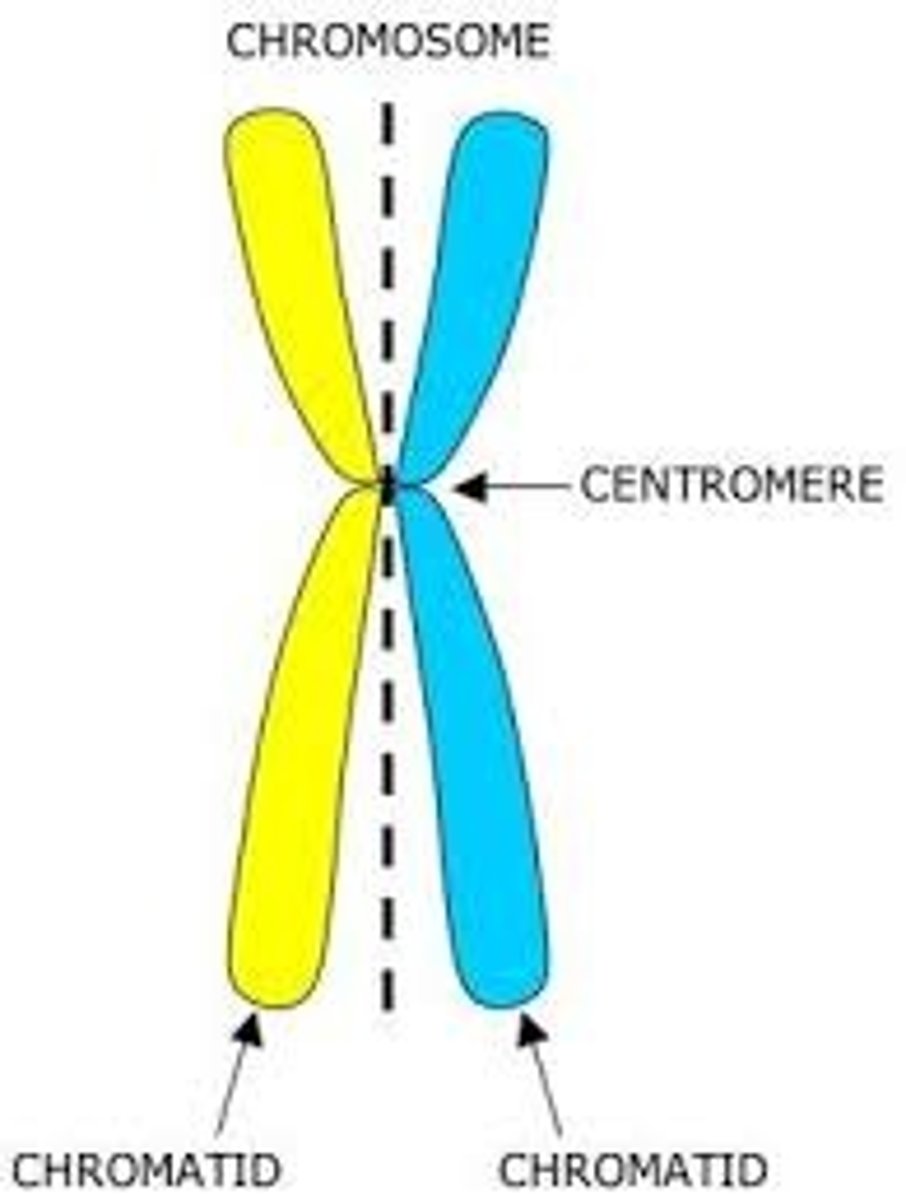
The centromere is a region in which _____.
sister chromatids are attached to one another in prophase
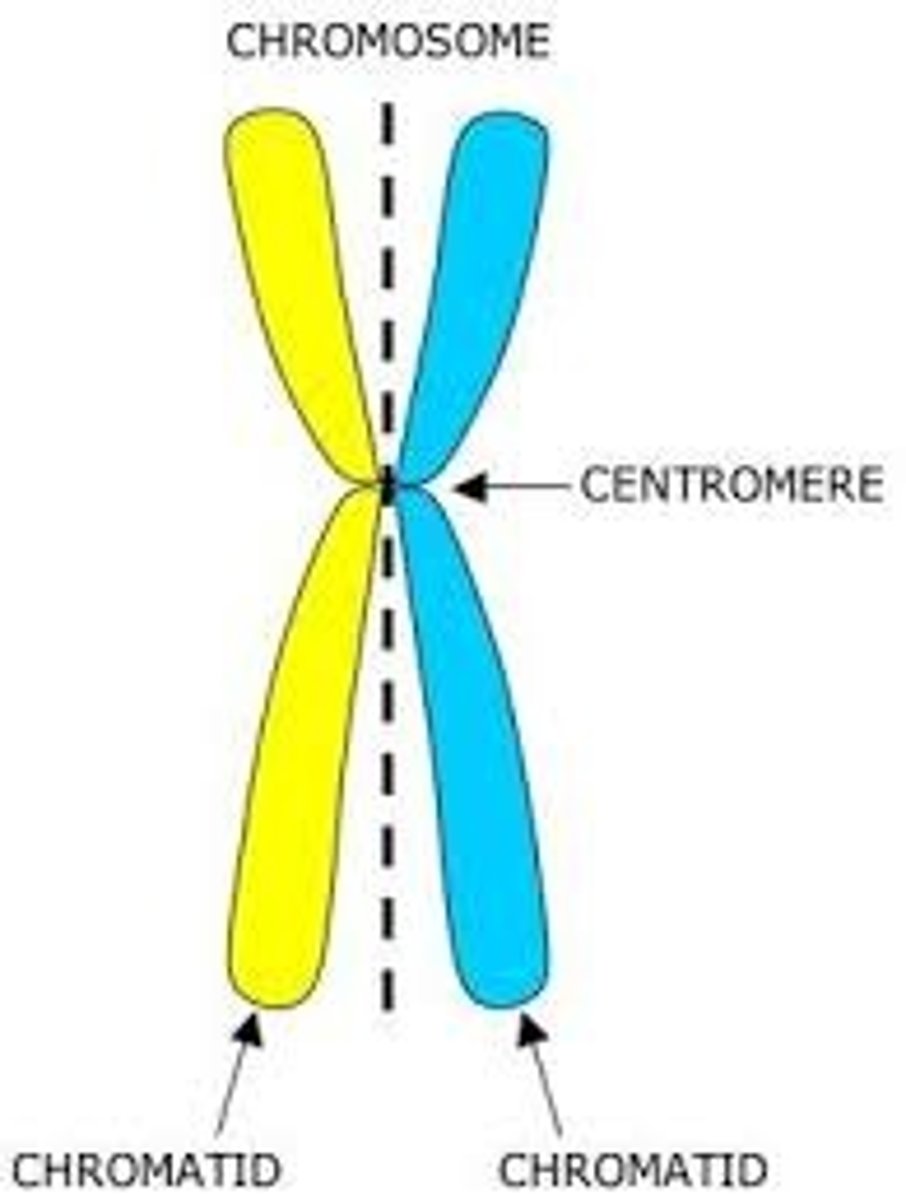
sexual reproduction
reproduction involving combining of genetic information from 2 parents
Embryo
an unborn developing offspring
Stem Cell
An undifferentiated cell that can give rise to all other cell types
Apoptosis
Cell death
Cancer
Uncontrolled cell division
Cyclin
Proteins that control the cell cycle
Growth Factor
Stimulates growth in Living Things